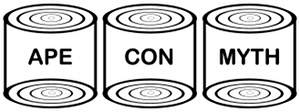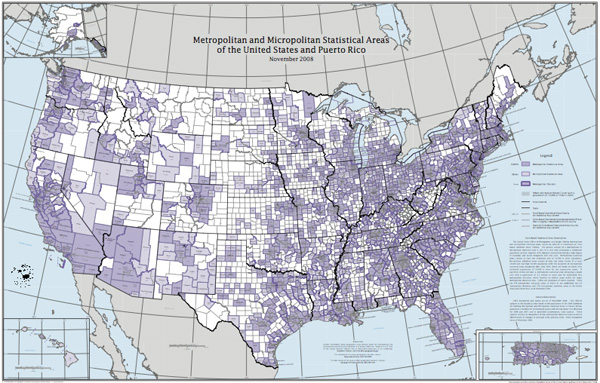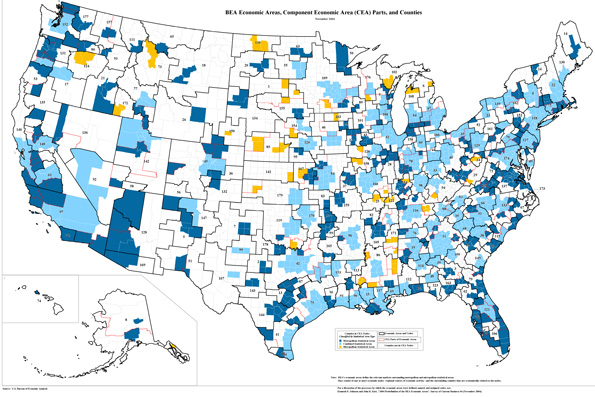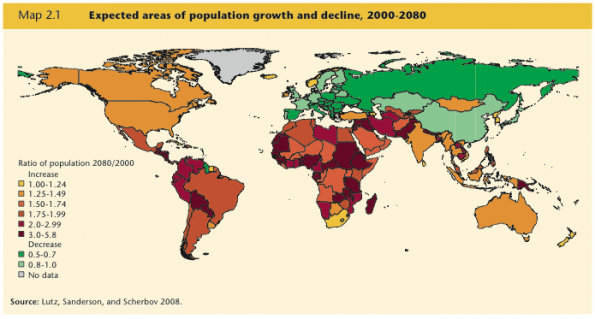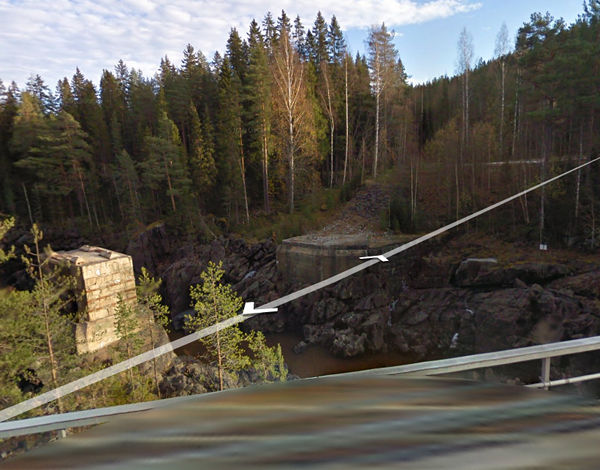Core Based Statistical Area Description: “The United States Office of Management and Budget defines metropolitan and micropolitan statistical areas, which are referred to collectively as “core based statistical areas” (CBSAs). The general concept of a metropolitan or micropolitan statistical area is that of a core area containing a substantial population nucleus, together with adjacent communities having a high degree of economic and social integration with that core. Metropolitan statistical areas contain at least one urbanized area of 50,000 or more population. Micropolitan statistical areas contain at least one urban cluster of at least 10,000 and less than 50,000 population. CBSAs are composed of entire counties. There are 374 metropolitan statistical areas, of which 11 are subdivided into 29 metropolitan divisions, and 579 micropolitan statistical areas in the United States and Puerto Rico, as of November 2008.”
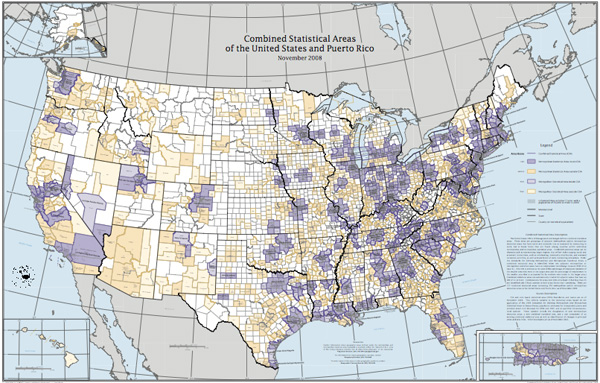 (click for enlarged Census Bureau versions)
(click for enlarged Census Bureau versions)
[U.S. Office of Management and Budget home; Wall map versions available via U.S. Census Bureau; more Statistical Area info here (MSA) and here (CBSA)]
